John Hill was born on a farm in Indiana in 1890. His grandfather had been wealthy, but his father lost all the family’s money in a series of business deals gone wrong, and Hill would spend the rest of his life trying to recapture his family's status, chasing the company and approval of rich men. Like a lot of other PR legends, he started his career as a journalist. But unlike the others, he seems to have been fairly good at it. While most of the rest just spent a year or two struggling to make journalism work, Hill was a financial and business reporter for 17 years before he got into the PR game. He even started a couple of newspapers himself, although struggled to keep them afloat.
His first foray into PR came in 1920, in Ohio, when he took a gig creating a newsletter that Cleveland’s Union Trust Company wanted to send out to local executives. By this time he was the financial editor of a steel industry trade magazine … because Ohio. These jobs put him in regular contact with executives who complained to him constantly that most reporters were inept at numbers. They also introduced him to a lot of influencers and executives in the area, and eventually Hill saw a niche he could fill: helping companies explain themselves to reporters who didn’t “get it” quite as well as he did.
Hill opened up his own firm in 1927 with Union Trust and Otis Steel as his first clients. Because Hill was well-liked by local executives, word spread fast and within a couple months he had built an impressive roster that included United Alloy Steel, Republic Steel and Standard Oil of Ohio.
The Standard Oil account was an important win for Hill because he was a huge fan of Ivy Lee, the country's first PR guy. Lee may have tapped Edward Bernays as his successor, but John Hill was probably a more natural fit. Hill hated how flashy Bernays and many of the other PR guys of his day were. He preferred Lee’s distinguished southern demeanor and emulated it. Like Lee, he preferred to stay behind the scenes … although Hill took it to an extreme, almost never appearing in the press. When he did show up anywhere, it was always in a conservative suit, clean shaven, hair slicked back, wire-rimmed glasses.
But just when his business was starting to take off, the financial markets came crashing in on themselves… The PR industry was actually one of the few to benefit from the Depression. In Hill’s case, when his first client, Union Trust, went under, he invited one of its top executives, Don Knowlton, to join him in March 1933, launching the firm Hill & Knowlton. His steel and oil clients had weathered the financial storm fairly well, and Republic Steel had just scored the firm a whale: the American Iron and Steel Institute—the trade group for the whole steel industry. They requested that Hill and Knowlton open up a New York branch near their headquarters in the Empire State building. That same month, Franklin Delano Roosevelt took office, and the new firm was only too happy to oblige.
That same month, Franklin Delano Roosevelt took office, with promises of a New Deal. Hill hated this idea, and so did most of his clients. Standard Oil had him write up an advertorial assuring people American business would be okay, and his steel clients had the firm cranking out pamphlets emphasizing the great relationship between steel workers and their managers.
“Workers in the steel industry represent a high degree of skill and intelligence,” it reads. “Most of the managers of the industry have worked their way up from the ranks. For a long time the industry has been distinguished by harmonious relationships and collective cooperation between employees and employers.”
The reality, of course, was that steel workers and their bosses had been fighting for a long time. And America’s big steel companies had done everything they could to repress unionization. It was a fight that went beyond the industry itself--as the largest industry and the largest employer in the country at the time, the steel industry viewed itself as sort of the last, best defense against unionization. A protector of American business, defender of bosses everywhere. They were helped in their efforts by near constant concern about creeping Communism in the U.S., starting with the 1919 Red Scare and continuing for decades.
Anti-union pamphlets Hill and Knowlton made for Republic Steel highlighted how union shops actually infringed on workers’ rights. “A closed union shop denies the right of the individual worker to make his own choice as to whether he wishes to belong to a union,” one notes. Another Hill + Knowlton client, the National Association of Manufacturers, one of the earliest industry trade groups went beyond pamphlets to sponsor a weekly, pro-business, anti-New Deal radio drama called the American Family Robinson.
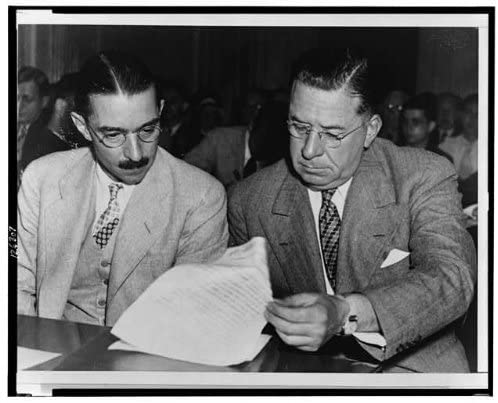
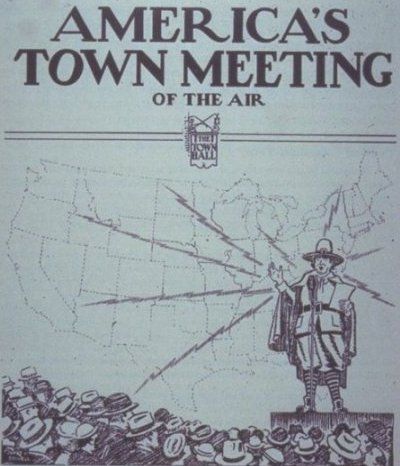
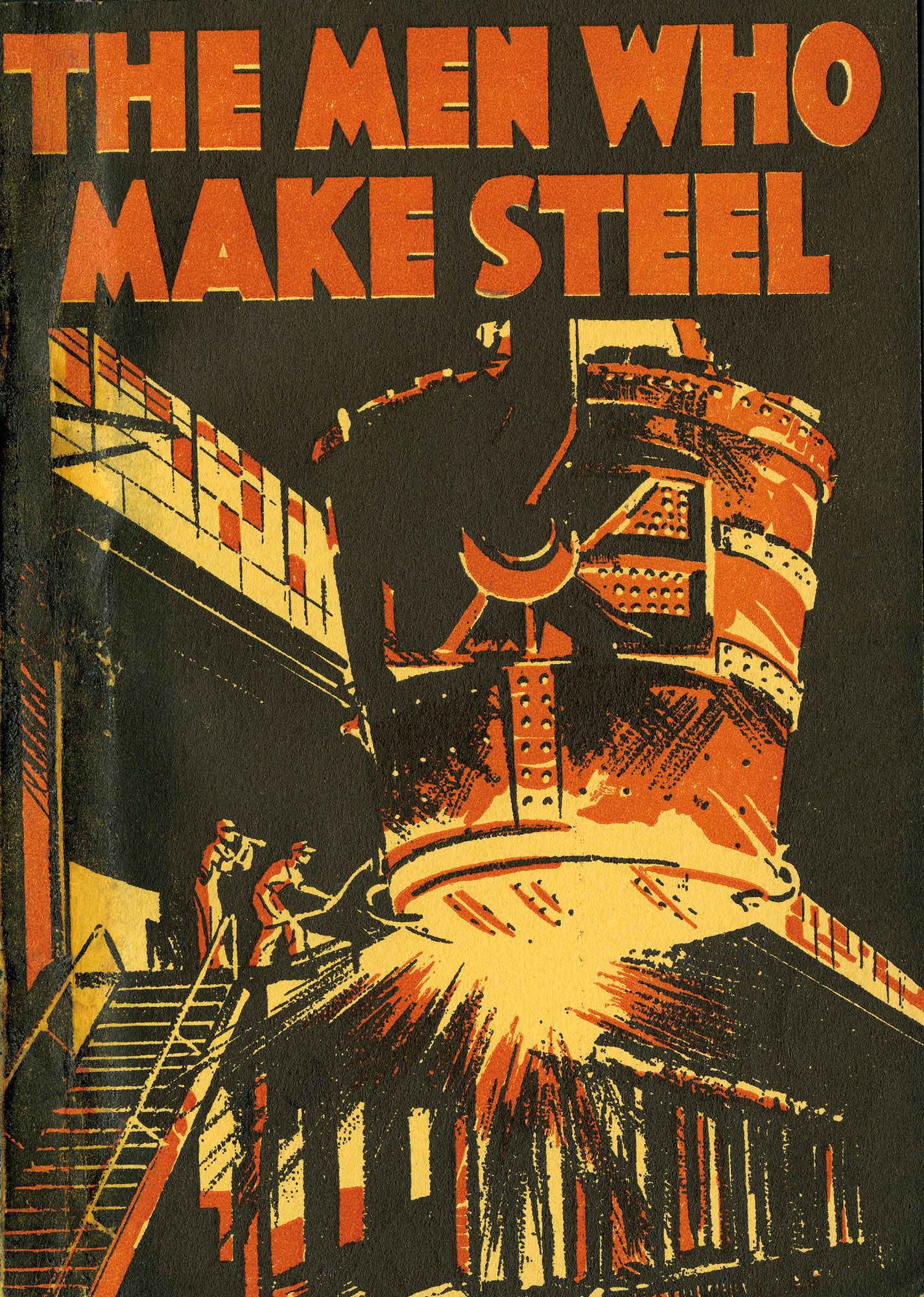
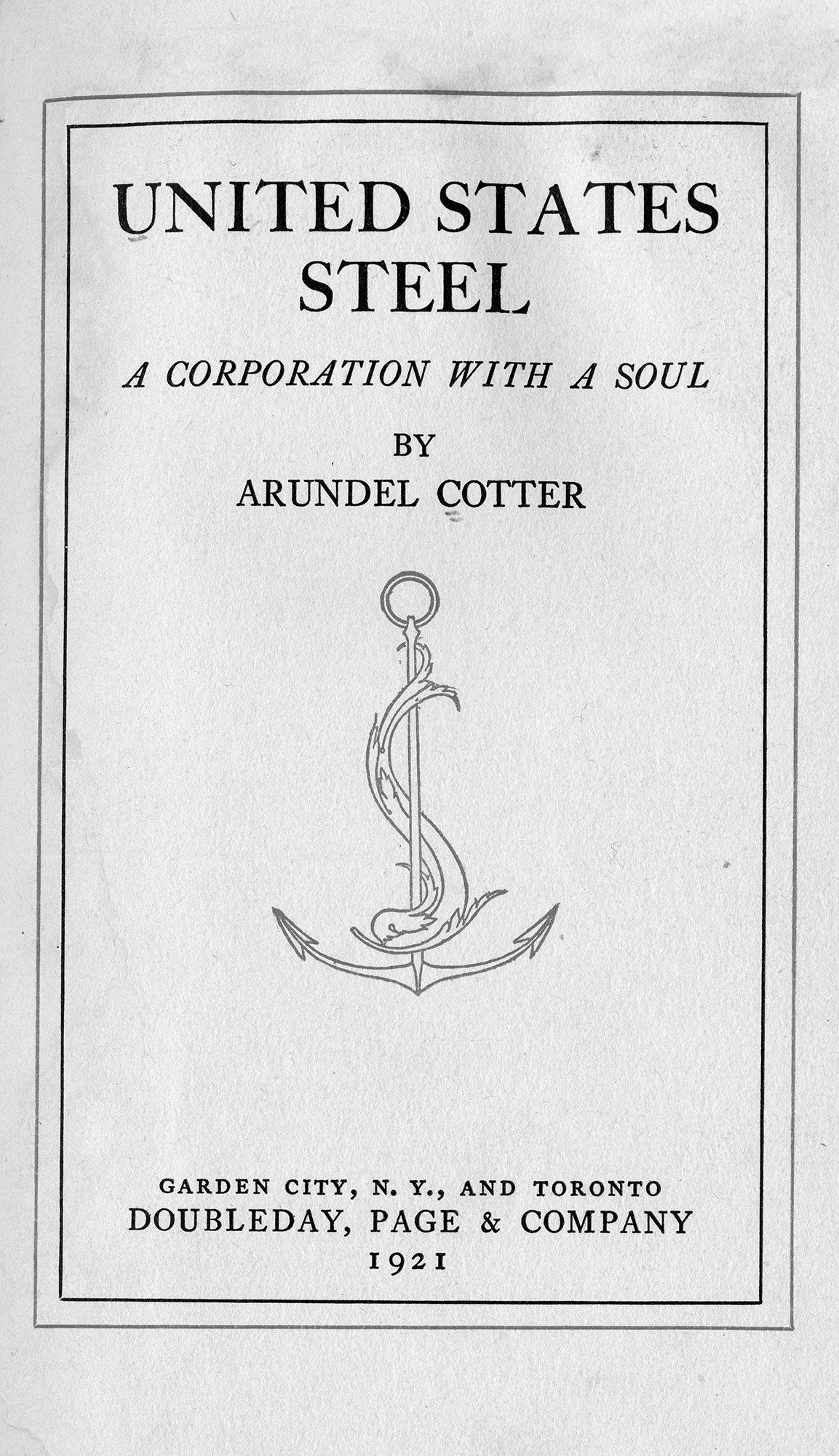
But after more than a decade of suppression, the labor movement was gaining steam again in the 1930s. A few years after opening his firm’s New York office, John Hill faced his first big challenge in P.R. And just like with his hero Ivy Lee, it came in the form of a violent labor strike.
Steel workers were starting to band together by 1936, forming the Steel Workers Organizing Committee within one of the country’s biggest unions (the CIO), officially freaking steel bosses out. The American Iron and Steel Institute put Hill and Knowlton on the case, and they wrote up full page ads with a manifesto for the industry. The ads suggested that outside agitators had coerced employees into joining the union; that the union amounted to forcing a worker to pay for a job; and that the industry, and therefore its employees, would be irreparably harmed by a work stoppage right in the midst of its recovery from the Depression. On the last day of June and the first of July 1936, the trade group sponsored full-page ads in 382 newspapers in thirty-four states.
But the unions persisted … and actually most of the industry was willing to negotiate. In 1937 U.S. Steel agreed to recognize the unions and negotiate a contract, which made it more difficult for other companies to resist. Eventually even the trade group backed down. But there was one holdout: Little Steel, an umbrella group that included smaller independent steel companies, was having none of it. Led by a man named Tom Girdler, president of Republic Steel, they refused to have any sort of contract with the union. Then in May 1937, Girdler was elected president of the steel industry trade group. Apparently, he had been stockpiling weapons in the months leading up to his takeover of the industry group, and he fully intended to crush this whole union idea once and for all. A strike began at the Republic Steel plant in Chicago the day before Girdler’s election, and within four days he had turned it into an armed conflict.
The union quickly branded the event as the Memorial Day Massacre, holding a mass funeral in Chicago attended by hundreds of working-class residents. Another riot broke out at the Republic plant in Youngstown, Ohio, that June, ending with two dead and forty-two injured.
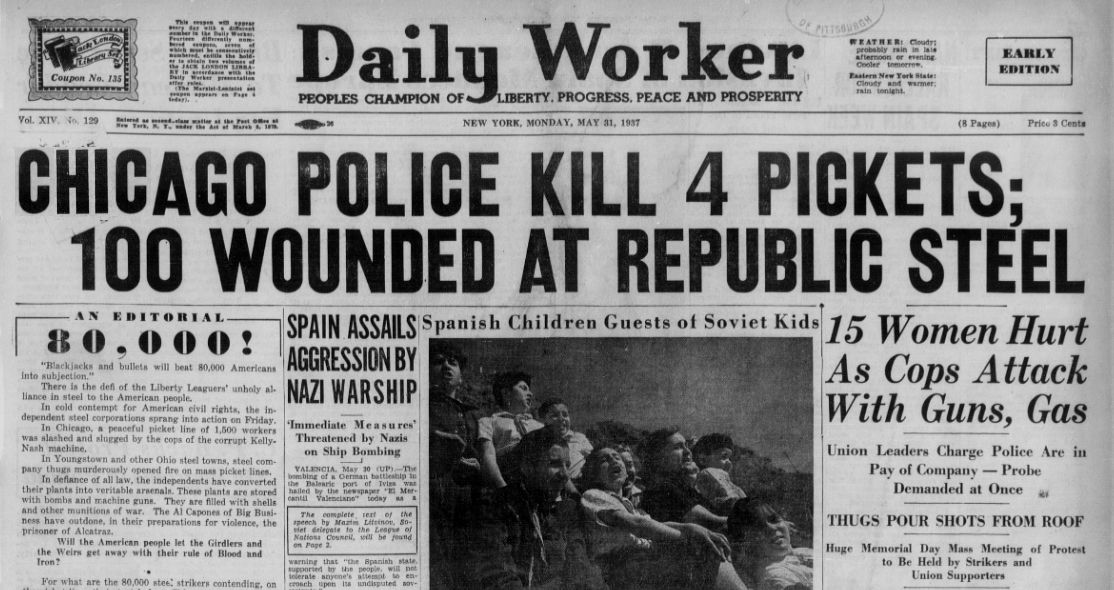
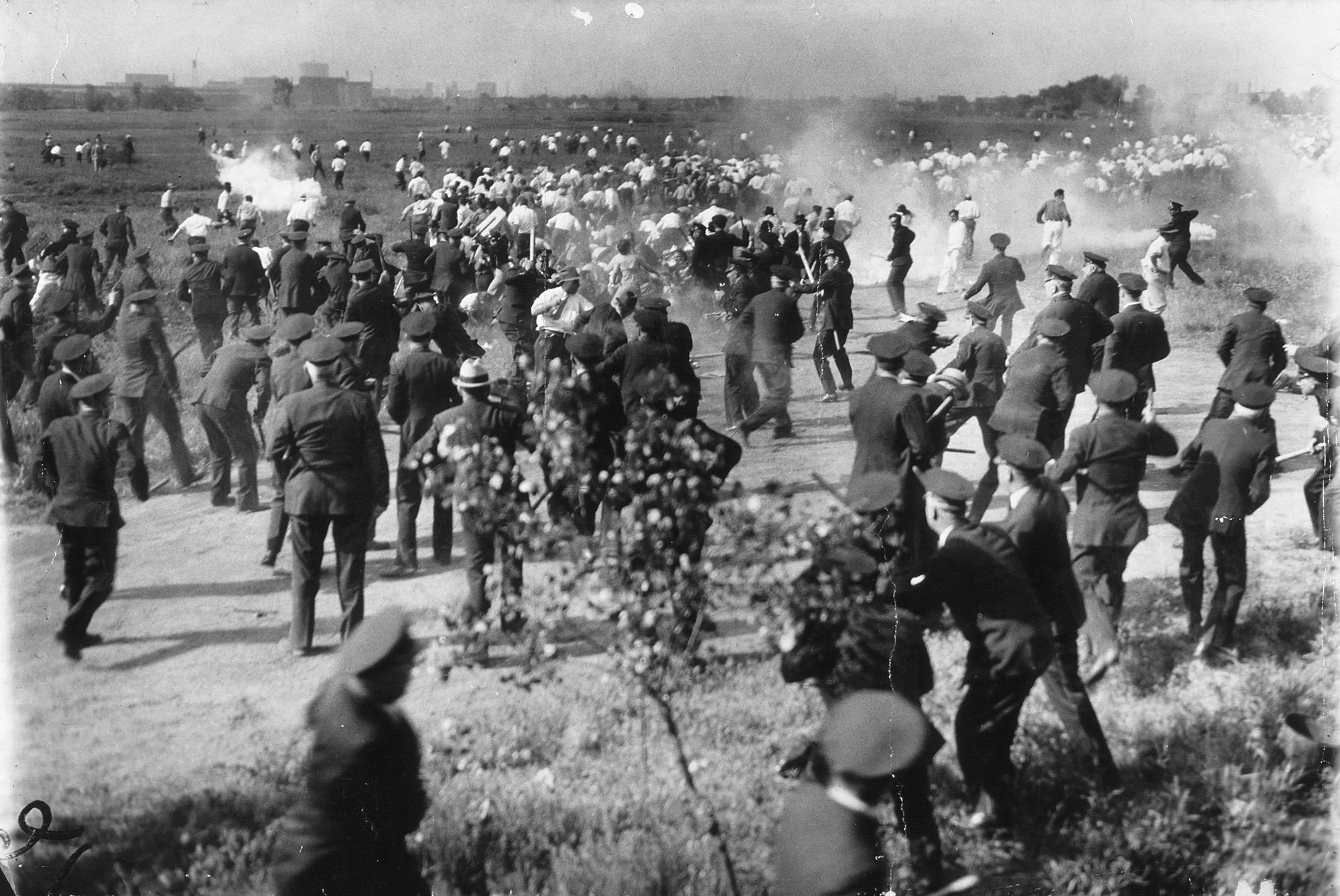
The FDR administration was having none of it. In October, the National Labor Relations Board ordered the companies to reinstate more than 7,000 workers with back pay.
Then the Senate launched investigations into the steel boss’s methods. Because of Hill’s involvement in pushing anti-union messages and ads in newspapers, he was caught up in the investigation, too. Senator Bob LaFollete discovered that not only had Hill placed ads, he had successfully bribed a journalist. George Sokolsky, a columnist for the New York Herald Tribune, frequently wrote about free enterprise and anti unionism in magazines, like the Atlantic Monthly. From 1936 to 1938, Sokolsky received $29,000 from Hill and Knowlton to write anti-union articles for the steel industry trade group. It worked: he wrote stories in prestigious newspapers and magazines about how the riots were all the union’s fault … never disclosing his connection to Hill and Knowlton or the steel industry. Sokolsky also regularly ranted on the radio for the National Association of Manufacturers and various other pro-business groups. Here he is ranting about that terrible socialist policy: social security.
World War II had just put an end to years worth of labor strikes in steel mills. John Hill was hired to help the industry through it all, but his work on that front was basically a failure. Not only had his clients lost the war with labor, but their goonish tactics had been outed in the press. They looked just like the evil bosses they were pretending not to be.
Still, a lot of people would have been fired for bungling the labor strikes so thoroughly. Hill had read the room entirely incorrectly. And not only that, he’d gotten busted bribing a journalist. But by this point, the steel and oil barons who made up Hill’s clientele considered him a friend, a trusted confident, more than someone they employed. He was routinely described in the press as a “trusted counselor to industry”. And he spent almost as much time managing how his clients saw him as how the public saw them. It was a big part of the Hill & Knowlton strategy in general. Hill and his execs didn’t just manage accounts, they attended the leadership and board meetings of their big clients and weighed in on corporate policy.
By this point, Hill had also learned a very important lesson: his job wasn’t to sell the public on any particular product, company or industry. It was to sell Americans on the importance of American business in general, and particularly big business. He was pushing ideology, creating social license for American industry.
That meant working in Washington, too, of course. Shortly after the war, Hill and Knowlton became the first PR firm to have staff dedicated to public policy work. The Washington office didn’t have its own accounts; it existed solely to handle government relations for the firm’s New York and Cleveland clients. By this point that meant they had their hands in everything from energy policy to agriculture and all points between, for clients like Texaco, Marathon Oil, Coca Cola, Monsanto, and a big new client: the Tobacco Industry Research Committee.
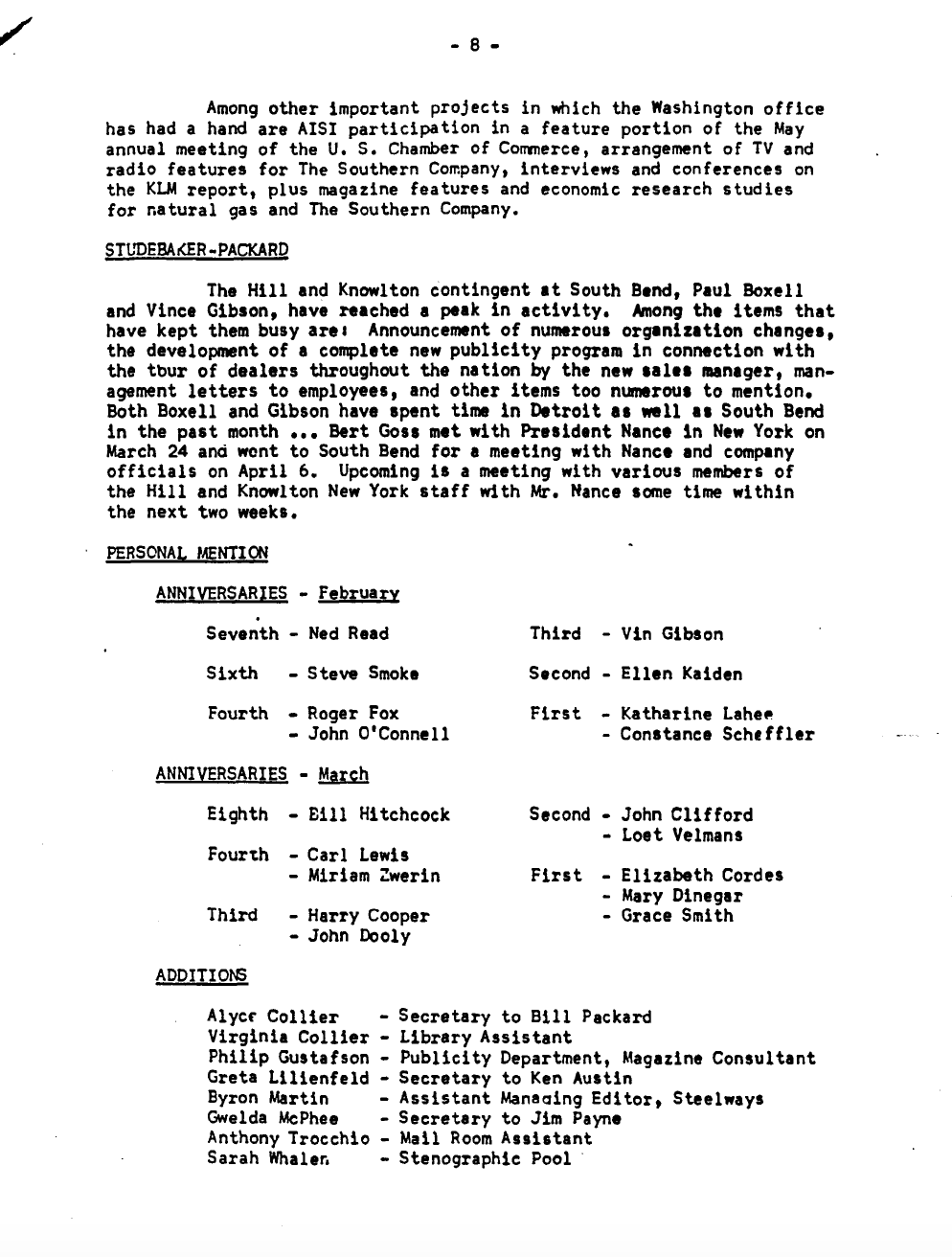
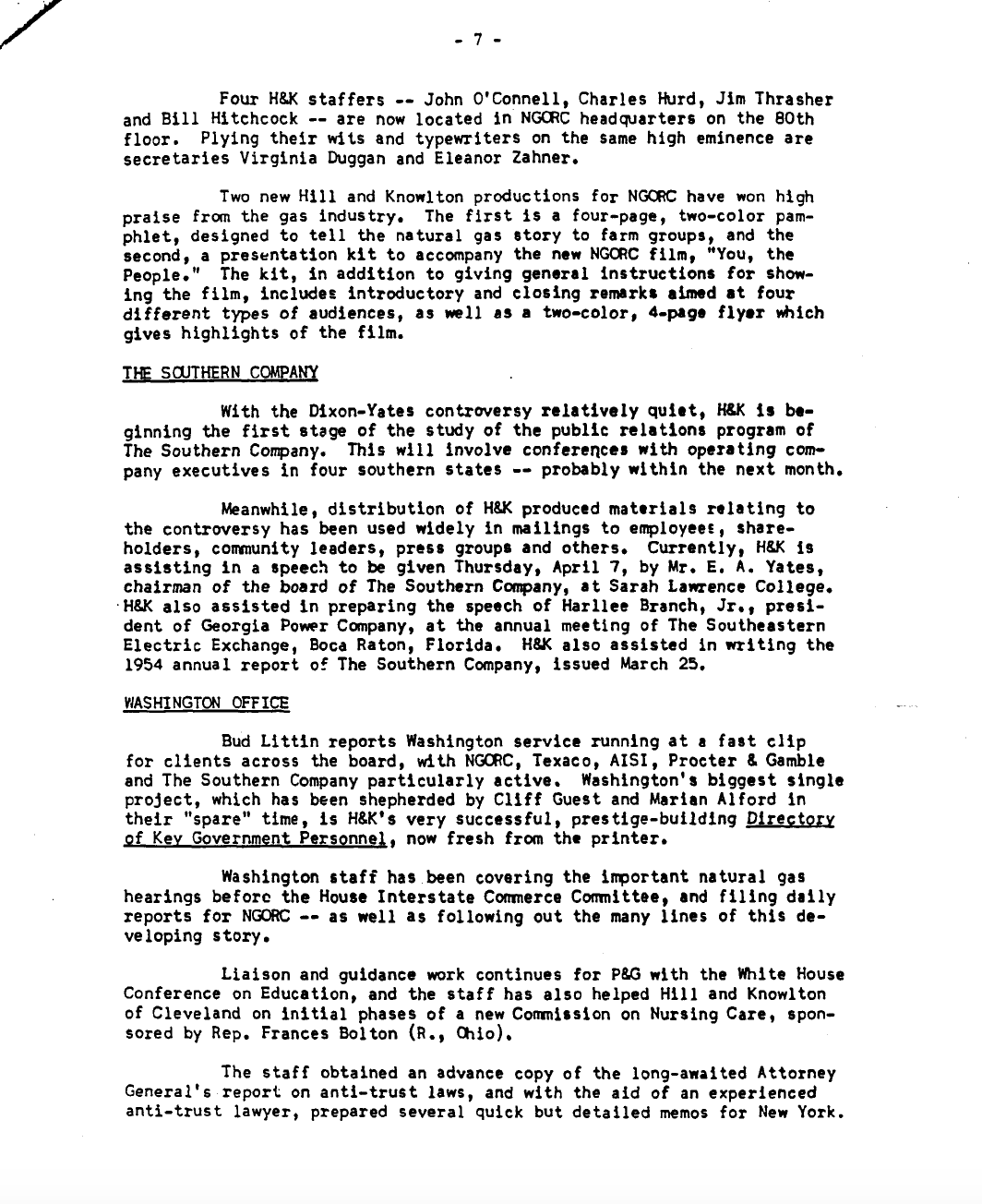
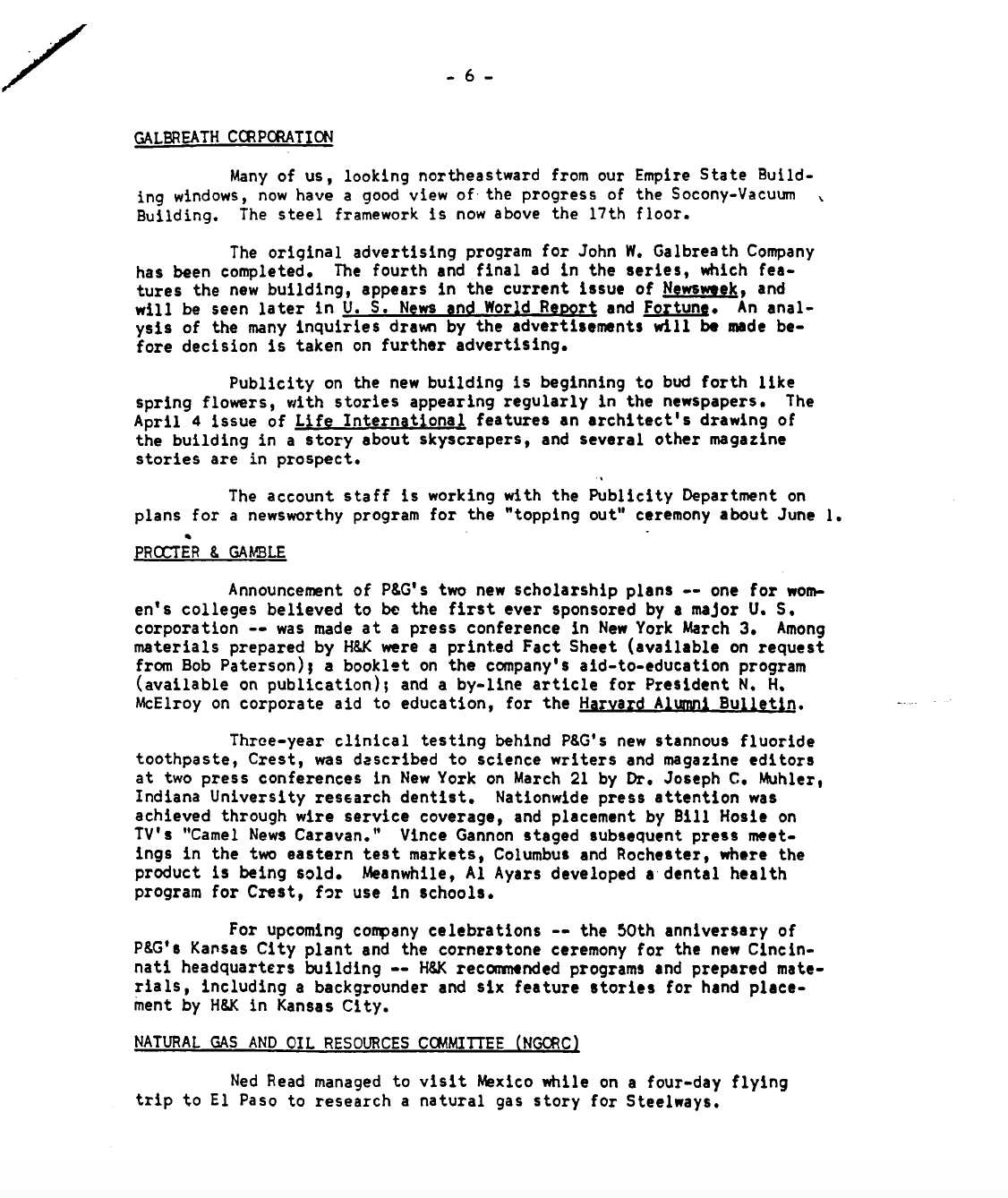
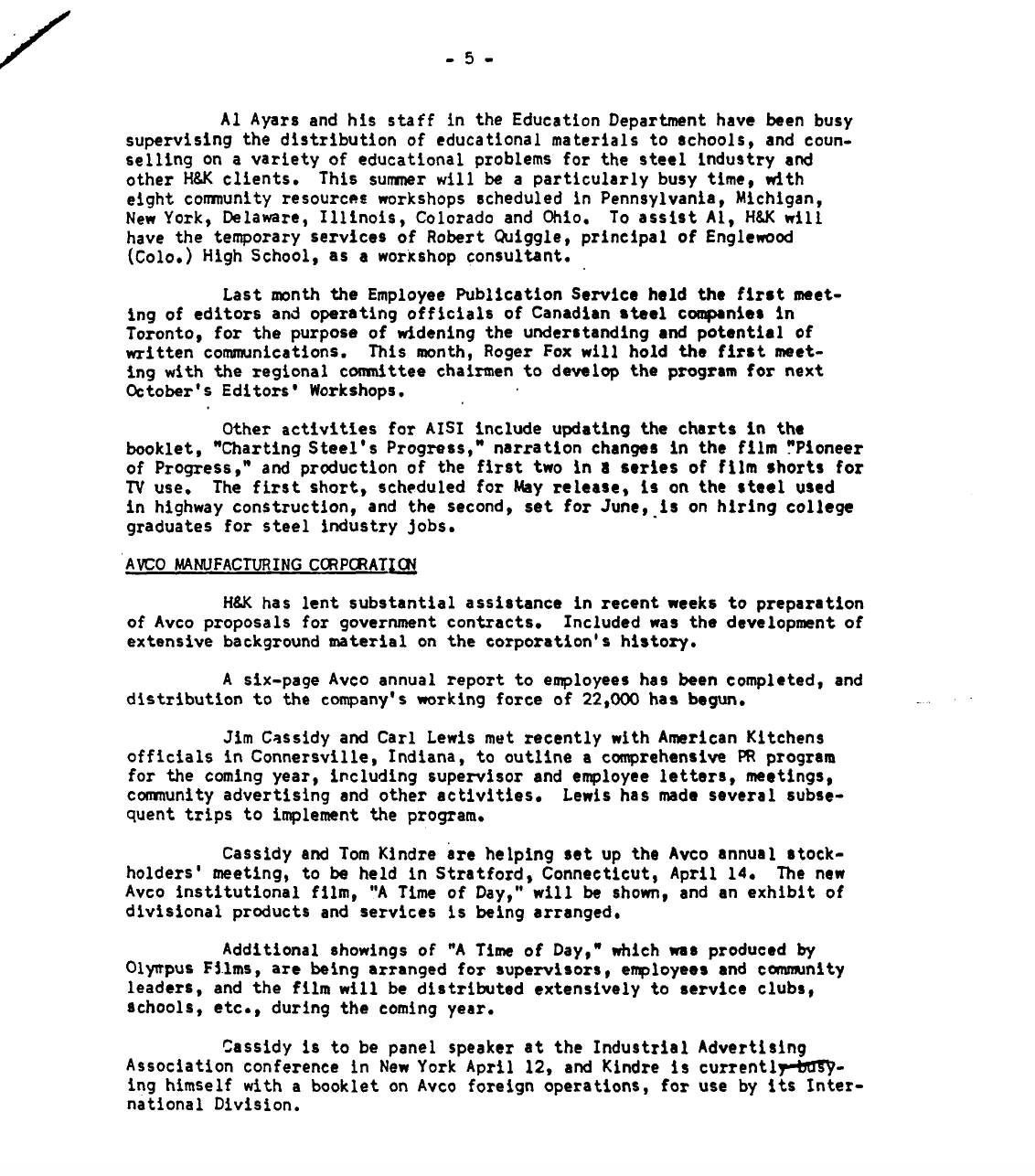
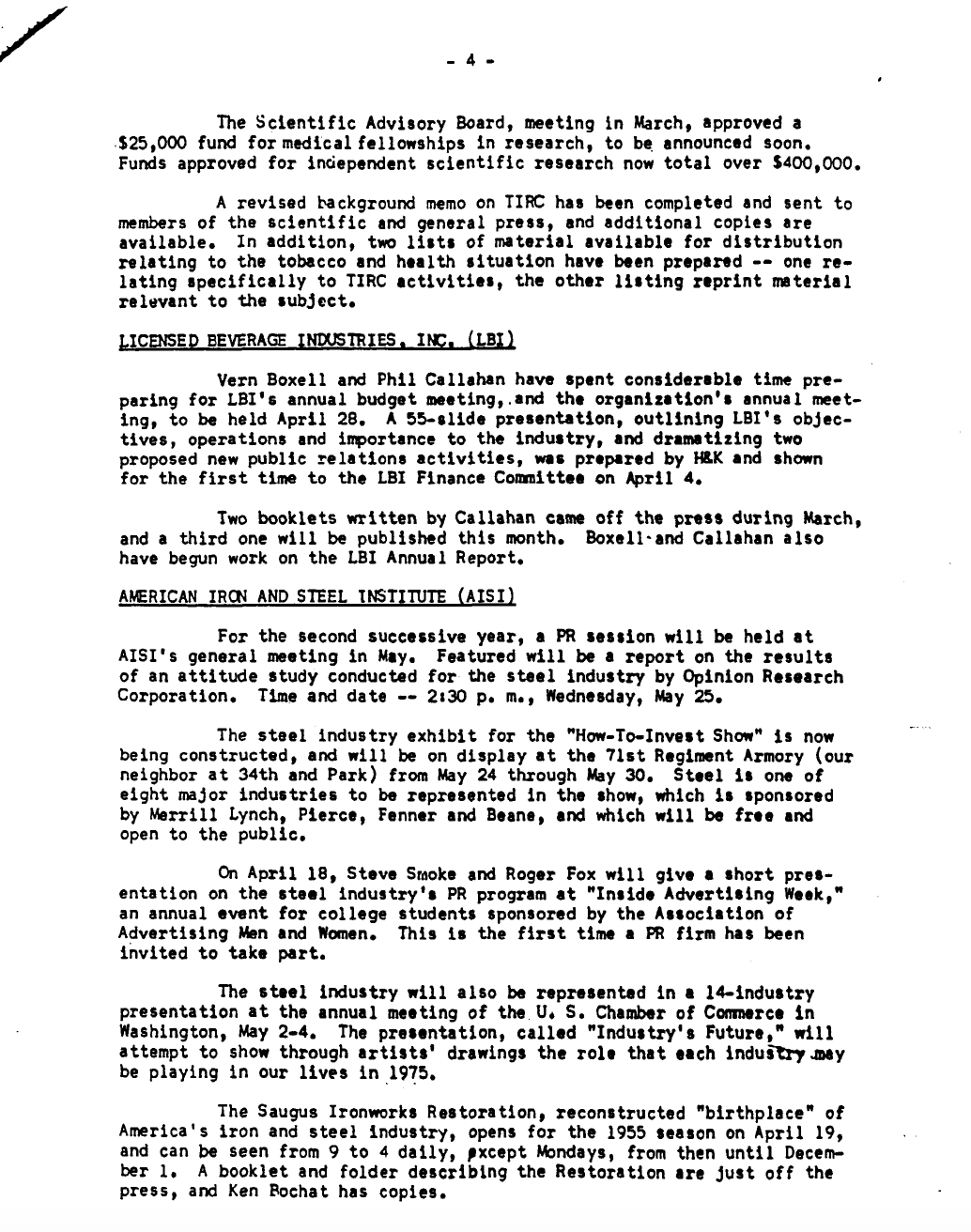
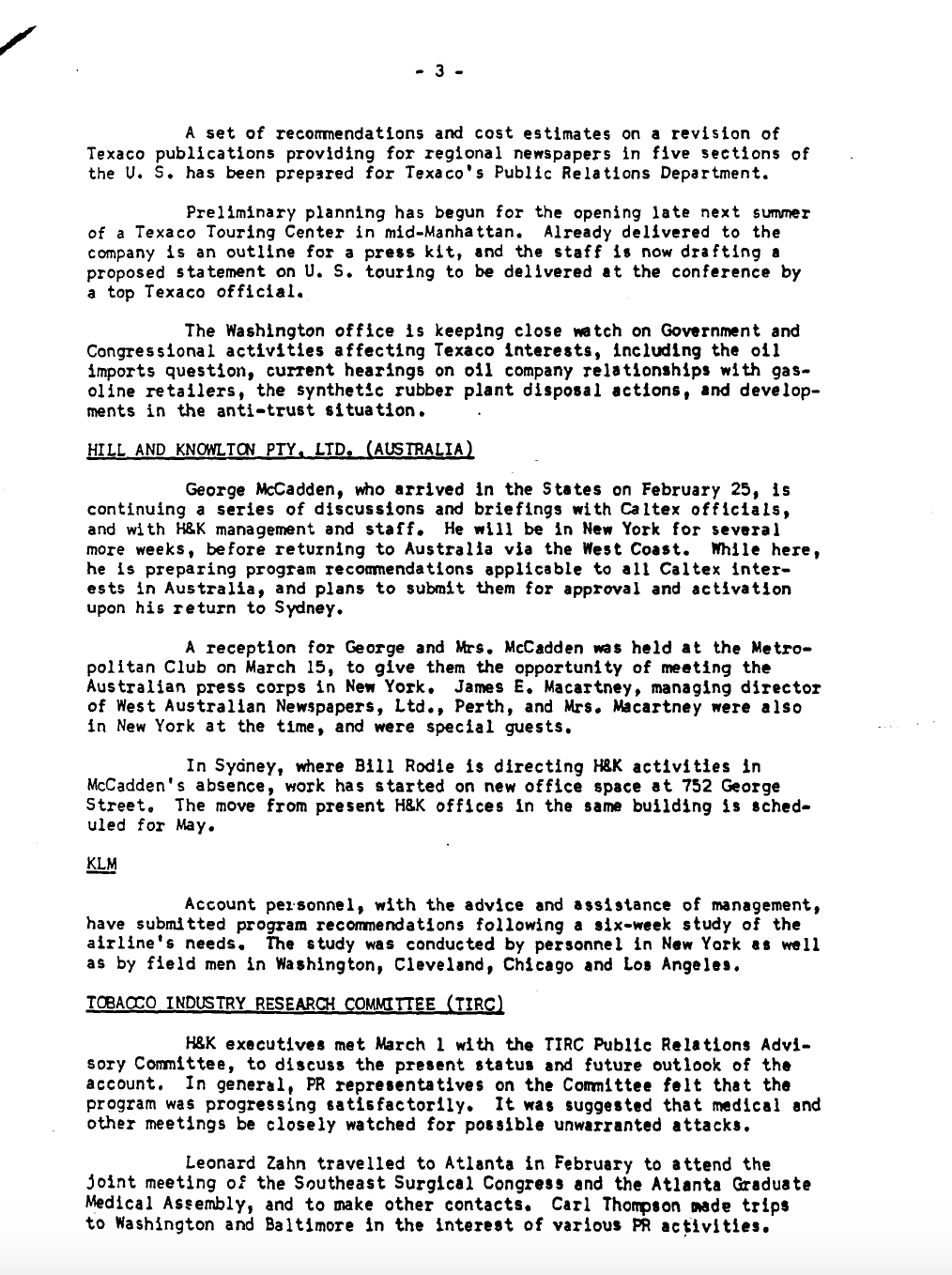
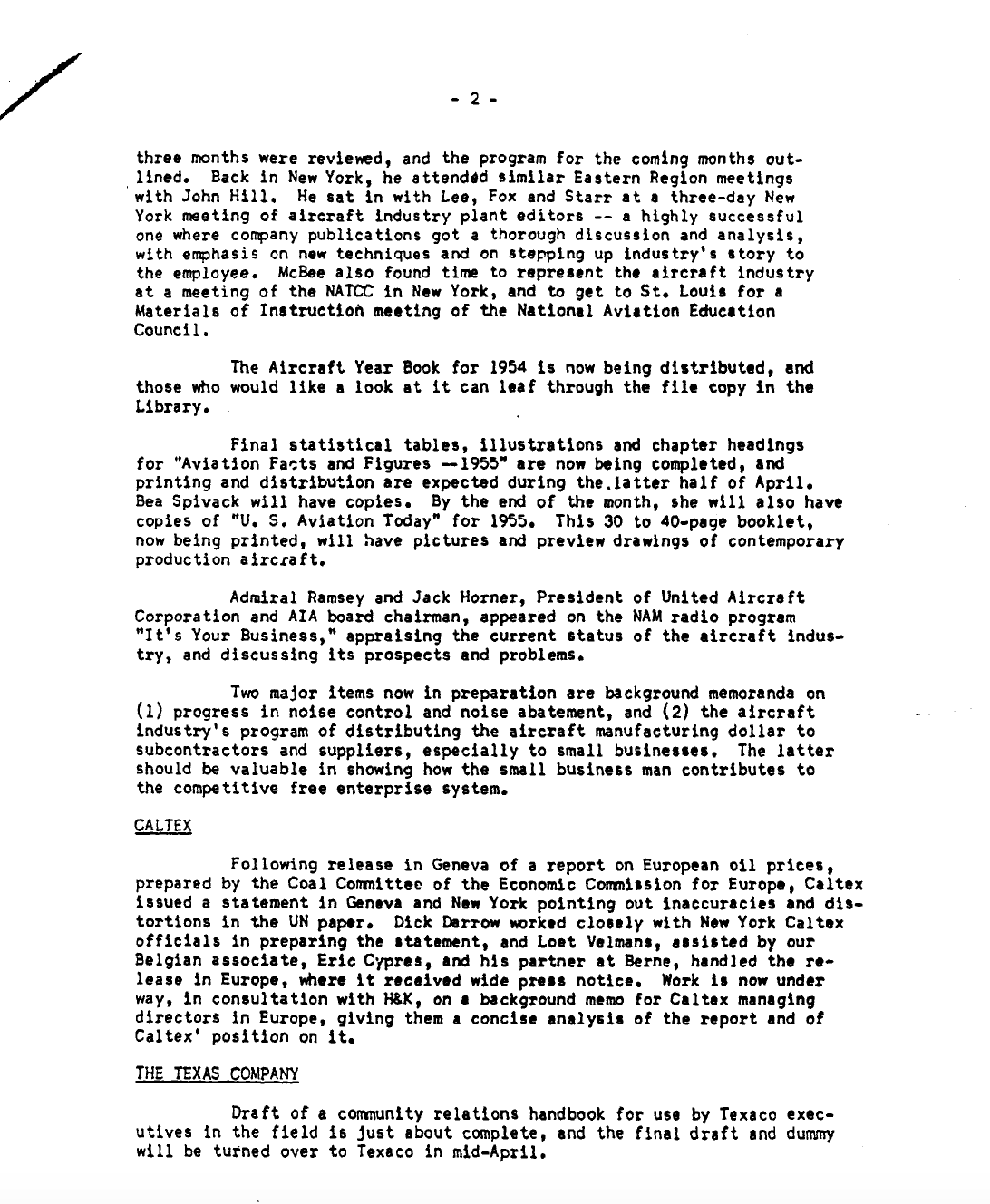
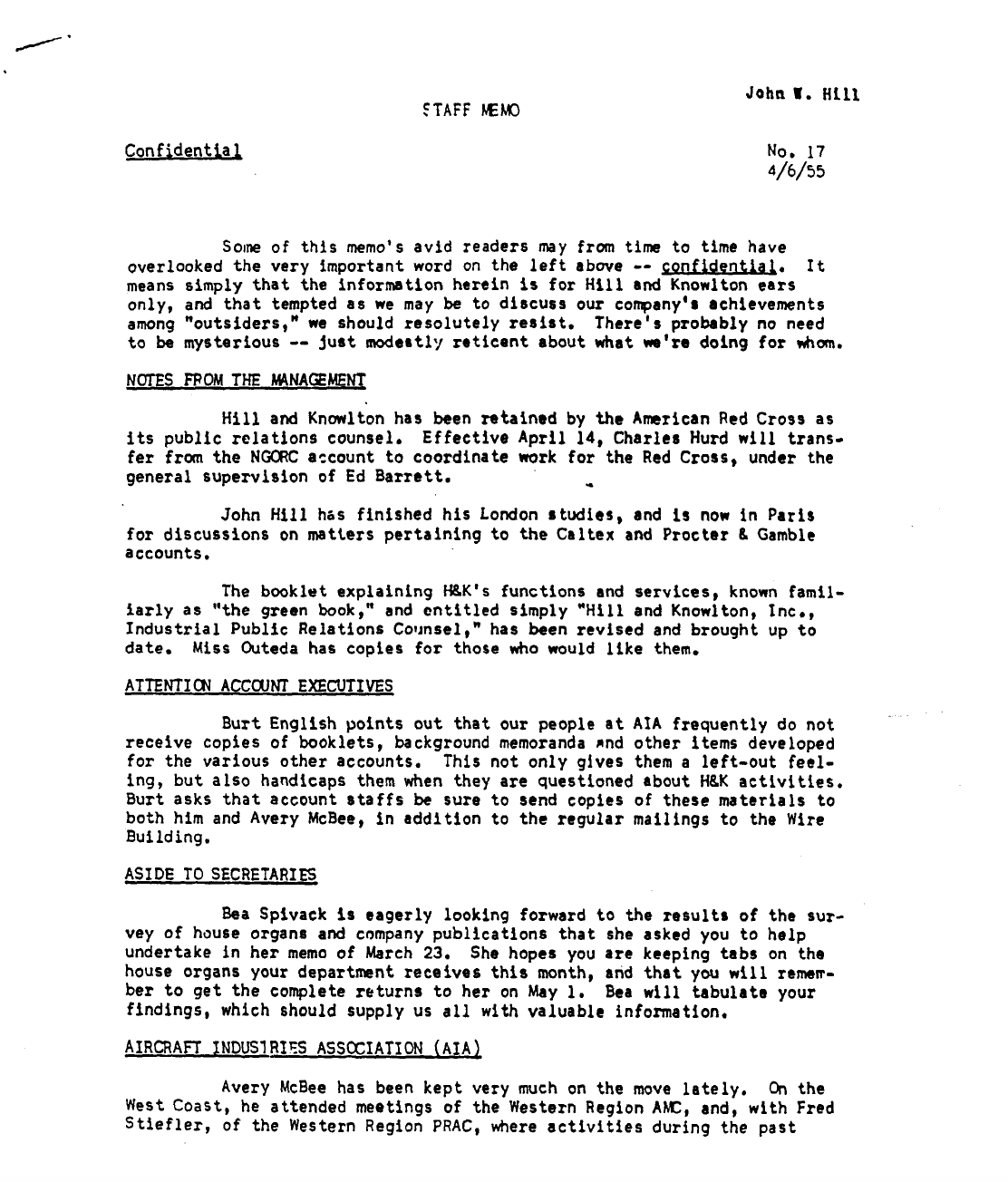
Tobacco Industry Research Committee
The Tobacco Industry Research Committee (TIRC), is a really good example of the type of strategy Hill would typically recommend for industries, and a good example of how the fake-expert strategy deployed by Lee and Bernays became science denial. It also illustrates the long-term link between tobacco and oil. Not only did Hill have oil clients early on who informed some of his work on tobacco, and vice versa, but he often brought them together in the same trade groups. RJ Reynolds, for example, a key member of the Tobacco Industry Research Committee, also had their research arm join the American Petroleum Institute, also a client of John Hill’s by this point. And then there was the fact that the oil companies helped come up with cigarette filters for the tobacco companies...that's why they were co-defendants in the tobacco litigation in the 90s. That and the fact that gas stations were a primary retail outlet for cigarettes, so companies in the two industries would often partner up on advertising campaigns.
while all of this is happening between the oil guys and the tobacco guys in the background, Hill and Knowlton has their staff funding and sourcing research on all the other things connected to lung cancer. And they’re looking for scientists to sign on to their advisory board, but what they really need is a credible director. This was all Hill’s brainchild. The tobacco companies initially argued with him that they had already done their own research, that they didn’t need a whole new research council. But Hill insisted: they needed third party, independent research that would be perceived as more credible by the media. Eventually they gave in. In December 1953, the CEOs of all the major American tobacco companies met with Hill at the Plaza Hotel to launch the Tobacco Industry Research Committee. They needed a reputable cancer researcher as director, which wasn’t easy to find. So in the first several months of the committee’s existence, its “research” was conducted by Hill & Knowlton staffers.
There are all these staff memos from this time where they’re giving updates on clients and the oil-tobacco connection is stark, because you’ve got updates on Texaco followed immediately by updates on the phony research committee, with lots of the same staff on both.
Eventually they hired Dr. Clarence Cook Little. He went by C.C., and Hill and Knowlton proclaimed him a world-renowned cancer researcher. It was a bit of a stretch. True, Cook did have some impressive credentials. He had been president of the University of Michigan, and had worked for a year as the director of the predecessor to the American Cancer Society today). BUT, he was also a huge fan of... eugenics. So much so that he’d been pushed out at the University of Michigan over his views. And in that same year that he was at the cancer society, he also led the American Eugenics Society. But even more pertinent to his work with the tobacco research committee was the fact that he’d never actually done any cancer research. The cancer “lab” that Cook ran just raised mice for actual researchers to use. In the hands of Hill and Knowlton, though, Cook became a widely respected researcher.
By 1947, John Hill and Don Knowlton had mostly parted ways, although the firm kept the same name. Hill gave Knowlton the Ohio clients and kept the rest for himself. Over the course of his life, he turned Hill and Knowlton into the largest PR firm in the world. Although he retired in 1962, he remained very involved in the firm, going to the office daily right up to a month before he died, at the age of 86, in 1977. Hill had stayed true to his commitment to stay out of the press himself, and none of his industrial machinations were well known at the time of his death.
For documents illustrating Hill's work, visit our Document Cloud folder on him.